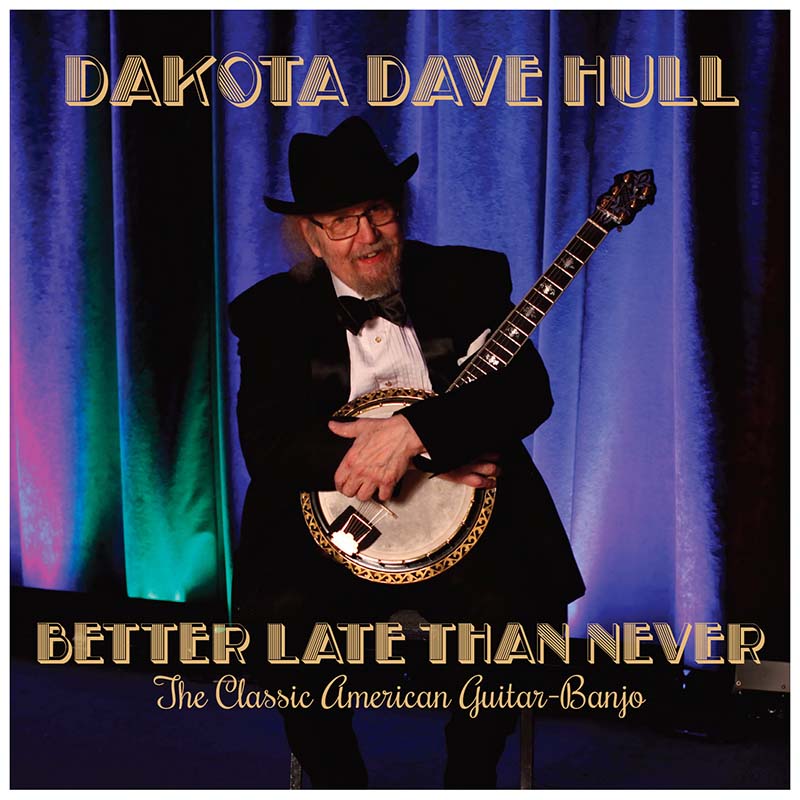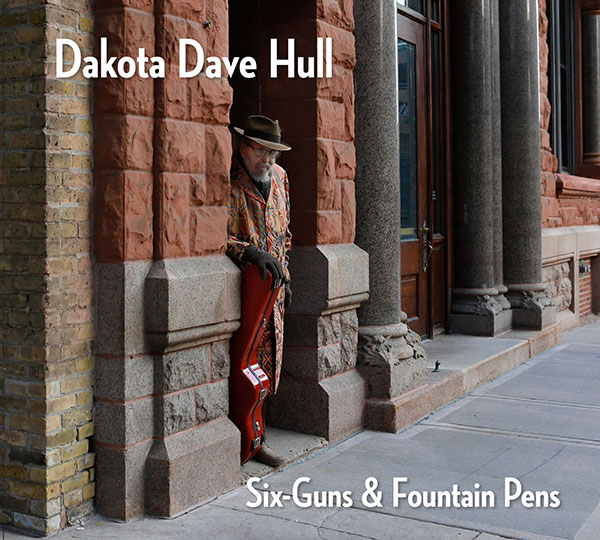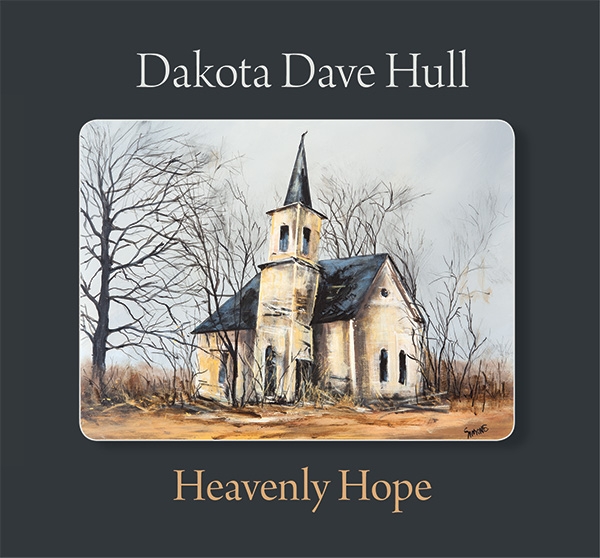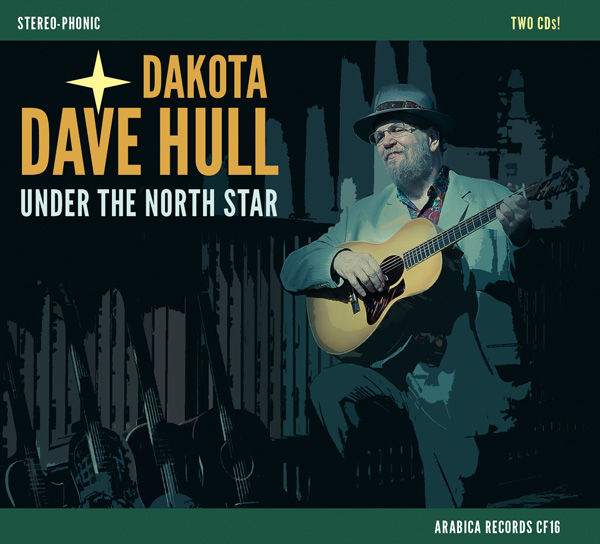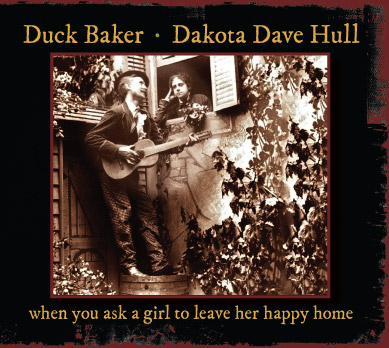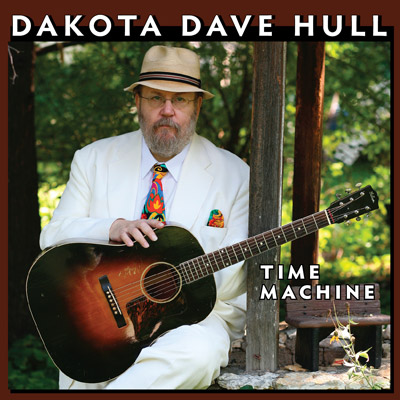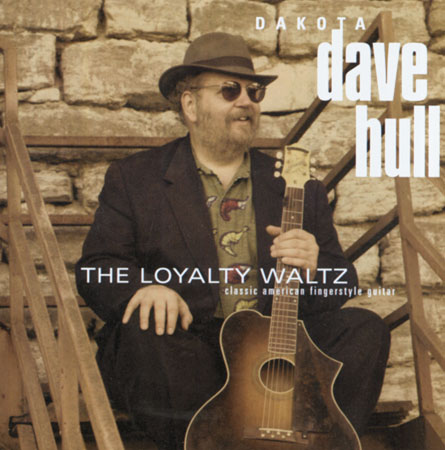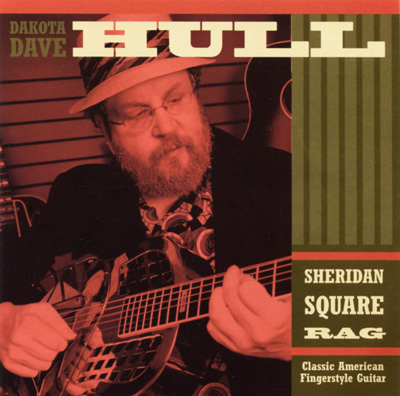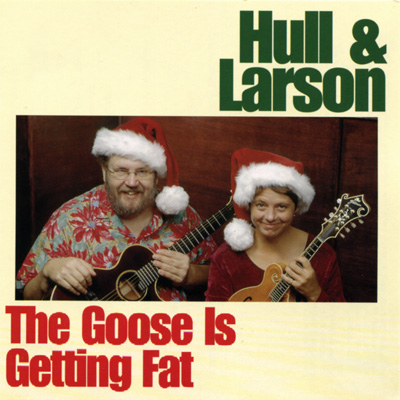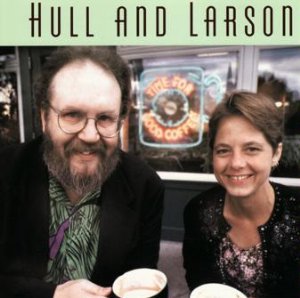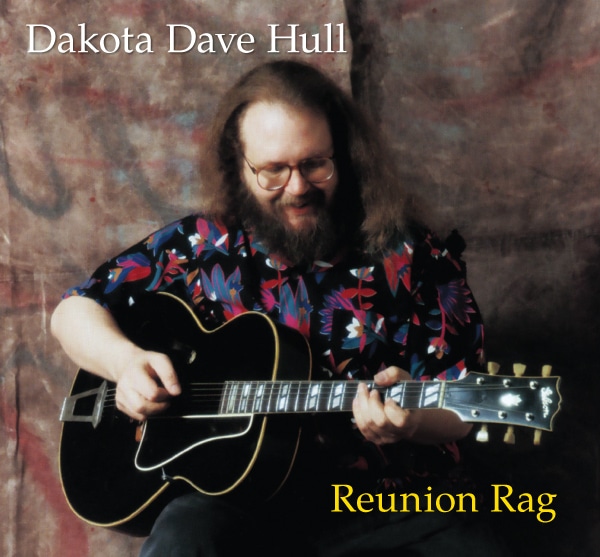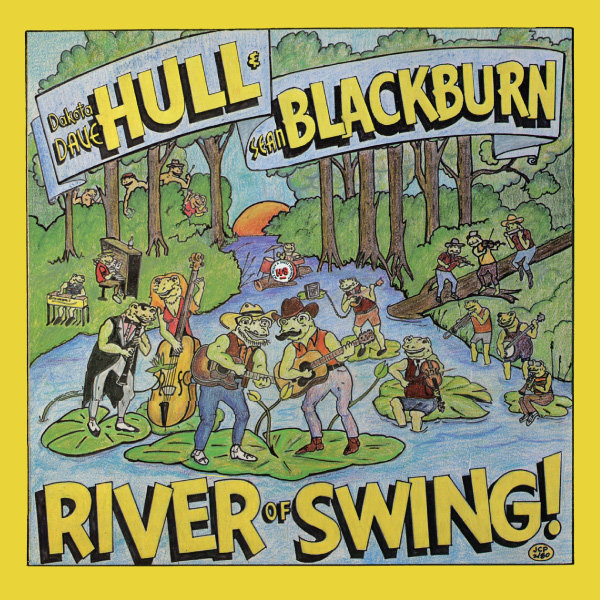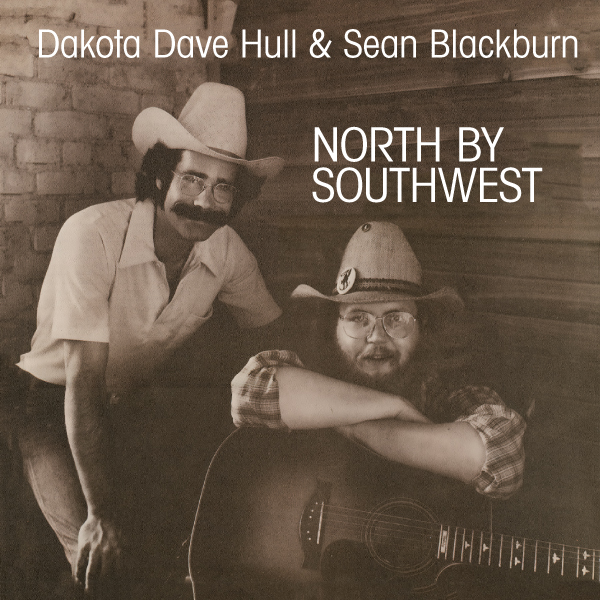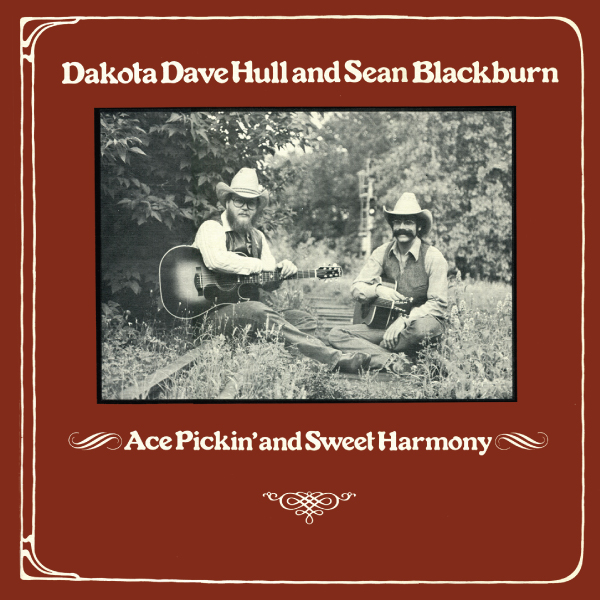Hull’s Victory
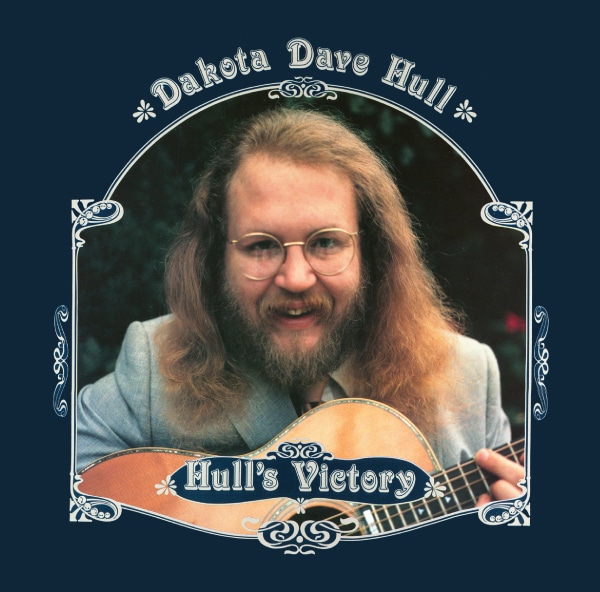
Hull’s Victory · Dakota Dave Hull
Arabica Records CF-23
Originally Flying Fish FF-294 (1993)
$15.00
Musicians
- Dakota Dave Hull: guitar
- Sean Blackburn: guitar
- Butch Thompson: piano
- Peter Ostroushko: fiddle, mandolin
- Doc Watson: guitar
- Barb Montoro: bass
- Mike Cass: dobro
- Bob Douglas: mandolin
- Bill Hinkley: guitar
Track List
- Steel Guitar Rag
- Blackberry Blossom
- Shavin’ the Cat
- Saint Anne’s Reel & Hull’s Victory
- I Don’t Love Nobody
- Festival Waltz
- Bill Cheatham
- Ragtime Annie
- Midnight on the Water
- Don Lohr’s Coffee
- Maiden’s Prayer
- Whiskey Before Breakfast
- New Camptown Races
Credits
- Produced by Sean Blackburn, Peter Ostroushko, Butch Thompson, and Dakota Dave Hull with assistance from Steve Wiese and Marge Ostroushko.
- Recorded by Steve Wiese at Creation Audio, Bloomington, MN
- Mixed by Steve Wiese, Sean Blackburn, and Dakota Dave Hull at Creation Audio
- Photography by Ed Beaty
- LP Cover layout by Dakota Dave Hull and Ed Beaty
- CD layout by Nick Lethert
- Frog by Annie Scheumbauer
- Notes by Adam Granger
Thanks to:
- T. Michael Coleman, The Coffeehouse Extempore, John Ashton, Steve Alarik, Bob & Liz Hull, Lora Slater, and Kathy Cossairt
- Special thanks to Doc Watson, Peter, Butch, and especially Sean, without whom this album would not have been possible.
Dakota Dave Hull’s guitars were made for him by Charlie Hoffman, 2219 E. Franklin, Minneapolis, MN 55404
Originally released on Flying Fish Records, #FF 294. Library of Congress catalog #83-743008
Dave’s legendary first solo album features the great Doc Watson!

Dakota Dave Hull & Doc Watson
Notes on the Music by Dakota Dave Hull
- STEEL GUITAR RAG provides the listener with an excellent idea of what this album’s all about (in case there’s any doubt). Dave plays the first break, followed by Mike, Peter, Butch, and Doc. At the end, Mike’s riffing and Dave’s, Mike’s, and Peter’s harmony light this tune’s way to a hard-earned, well-deserved bed.
- BLACKBERRY BLOSSOM is a glimpse into the past, being essentially the same double-guitar version that Peter and Dave used to play eight years ago when they performed together regularly. Peter opens, Dave plays, and they close with a harmony break. Barb sticks like glue to the whole tune.
- SHAVIN’ THE CAT, composed by Dave and Butch, gets its name from a key phase of Sean and Dave’s infamous Pet Discipline Program (write for details). Shavin’ the Cat is an excellent opportunity for Dave, Butch, and Barb to exhibit their swing chops.
- ST. ANNE’S REEL and HULL’S VICTORY make up the only medley on the album. Barb is the entire rhythm section, with Pete and Dave weaving in and out of each other like a Hudson Bay blanket.
- I DON’T LOVE NOBODY is kicked off by Doc, then traded off between him and Dave, with the two of them egging each other on throughout. Like the other cuts recorded with Doc, this tune was done”cold” (they were all recorded in one three-hour session).
- FESTIVAL WALTZ is, to my ear, totally transformed by its triple mandolin trill beginning (played by Bob and a double-tracked Peter). Dave then comes in with a very classy, but still appropriately spare guitar break recorded over his original rhythm part, with the ornate mandolin section then returning. Just when one wonders what can possibly come next, the tune ends.
- BILL CHEATHAM is one of the album’s straight hoedown tunes kicked off by Peter on fiddle, then played by Doc, Bob, and Dave. Doc, with Dave in harmony, closes the tune.
- RAGTIME ANNIE is what we in the business call a great side-opener. This tune is given six totally different personalities in breaks by Dave, Pete, Doc, Butch, Peter and Bob in harmony, and finally Dave again. Laughter from the normally taciturn Peter during Butch’s break attests to the specialness of this cut.
- MIDNIGHT ON THE WATER comes from Sean and Dave’s current repertoire, and is played here as they perform it, with understated classiness and a nice harmony ending.
- DON LOHR’S COFFEE features Bob and Peter on twin and harmony mandolins, Dave on double leads, and a necessarily-immodest rhythm section of Barb, Butch, and Bill on arch-top guitar. Dave composed this tune in honor of his friend Don Lohr of Tucson, who taught Dave how to roast coffee beans and so, Dave swears, completely changed his life.
- MAIDEN’S PRAYER is begun by Mike, with Doc playing fills throughout. Dave plays next, then Mike plays the last chorus. Barb provides a common link for the rhythm of this tune, which changes from Butch’s barrelhouse piano (although the quality is more Porterhouse) to Dave’s swing guitar.
- WHISKEY BEFORE BREAKFAST is one of my favorite cuts, being a completely pure dose of Dakota Dave Hull. A solo setting best reveals a guitarist’s technique, timing, taste, and class, and Dave’s revelations here are panoramic.
- NEW CAMPTOWN RACES, a Frank Wakefield composition, is given a musical shot in the arm in this version, which starts with a mandolin harmony by Bob and Peter, then proceeds through interpretations by Dave, Butch, Pete, and Dave again. Bill’s arch-top provides the solid rhythm.
- NOTE: Although she wasn’t always mentioned, Barb plays on every tune on this album except Whiskey Before Breakfast. There is an old saying, which I just made up, that while there is much to be said about bad bass playing, good bass playing tends to be self-evident: The better the bass playing, the less there is to say about it. I have nothing to say about Barb’s bass playing.
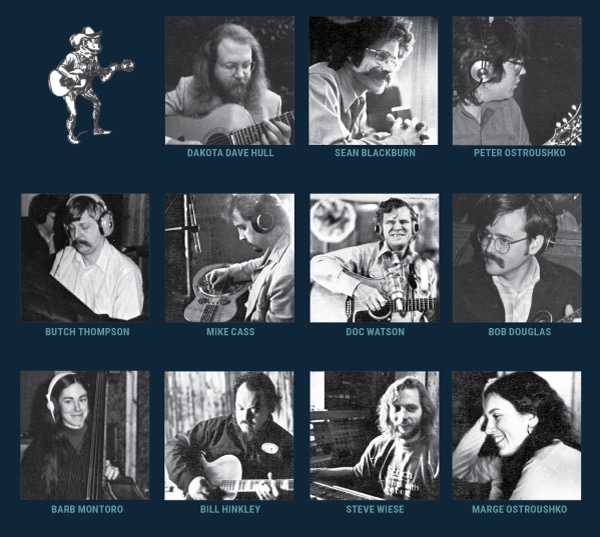
Liner Notes by Adam Granger:
W hen Dakota Dave Hull called and asked me to write the liner notes for his guitar album I said yes, hung up, and immediately had second doubts. Had I, because of my longstanding friendship with Dave, gotten myself into something I shouldn’t have? After all, I hadn’t even heard the album yet, and already I’d committed myself to write all sorts of nice things about it. What if the album turned out to be—to use a professional term—a dog? What if I ended up writing about how attractive the label is, or how the album was recorded on my favorite day of the week? Sure, I knew Dave, liked his guitar playing, and respected his technical prowess, but, just as a pitcher can lose his arm, or an artist his eye, things can go wrong with a musician. What if he’s lost his chops? Why, shoot, I hadn’t even checked Dave’s hands to make sure his fingers were still all there! The thought plagued me: what if the album were straight on its way into the old Hefty bag, and were taking me, by association. with it? Well, I vowed then and there to never again consent to writing liner notes for an album before subjecting it to the dreaded Adam Granger Record Scrutiny System (A.G.R.E.S.S.) examination. This multi -point test presents the disc in the harshest of lights, approaches it with the most cynical of ears, and probes it with the hardest questions imaginable. The Beatles’ White Album squeaked by the test, Norman Blake’s first album had cleared the passing mark, most of the London Philharmonic’s stuff had gotten by: Would Dakota Dave Hull’s album?
I met with Dakotey to pick up a tape of his album and was relieved to find that he still had all of his fingers, and that he appeared to be the same old Dakota Dave Hull. (Check the “NO” box for question one of the AGRESS test: “Has performing artist physically or mentally maimed himself beyond the ability to make good music?”) I took the tape home, put it on, and sat down with my clipboard. The first phase of the test passed quickly, with questions falling like tenpins: Is material lacking variety? (With tune selections from swing to waltzes, and touching most bases in between?) Are arrangements mundane or boring? (With triple mandolin breaks, piano leads on fiddle tunes, and all numbers of musicians from one to six? Are other musicians on the album competent? (With the likes of Butch Thompson, Peter Ostroushko, and Doc Watson, a fairly safe “yes”.) Does performing artist “hide behind” other musicians to mask inability? (It playing back-to-back guitar breaks with Doc Watson is hiding, then I’m Joan of Arc.
The next phase of the AGRESS examination was the field test, by far the most stringent part of the test. I took my five-year-old son, a friend of his, and every other noise maker I could find and headed to my summer residence in northern Minnesota, determined to play the album under genuine battle conditions. To add insult to injury, I used a portable cassette recorder which boasted a two-inch speaker. The idea behind this part of the test was to simulate the absolute worst conditions under which music could be heard. For weeks I played the tape while the battle raged about me: a mashed finger here, an argument there, and always the music came through. (This is as much testimony to the quality of production as to the staying power of the music.
It’s one thing to produce a recording that sounds good over fifteen-hundred dollar speakers; it’s quite another to produce a recording that renders the bass audible through six other instruments over a two-inch speaker. These engineers were definitely not asleep at the board.
The third and final phase of the AGRESS examination was what I call the attitude-shift part.
Could I, through cynicism, professional jealousy, spite, and general bad karma, make myself dislike the album? To prepare for this part of the test, I spanked my kid for no good reason, I refused to eat my green vegetables at dinner, and I kicked my little cassette recorder across the room for good measure. Then, with bad karma surrounding me like a fog, I sat down to listen once again.
As the by-now familiar tunes dutifully trotted themselves out one past the other, I muttered things like “big deal”, “so what”, and “who needs it?” I generated nasty thoughts about Dakotey, trying to remember if he owed me any money, and picturing him in his skivvies. I assessed the tunes with a calloused. crabby ear, and fell into bed, emotionally exhausted, but thinking that finally here was a part of the test that the album had failed! That night, though, instead of tossing and turning with bad-vibe nightmares, I slept like a baby, while copies of “Hull’s Victory” cavorted over a fence singing out, “You know you like me, you know you like me…” Well, they were right, folks. The album passed the sternest test known to discs. It’s a wonderful album. I love it. Don’t even put it down, just buy it. It is Hull’s victory. – Adam Granger · Aitkin County, Minnesota 1982
